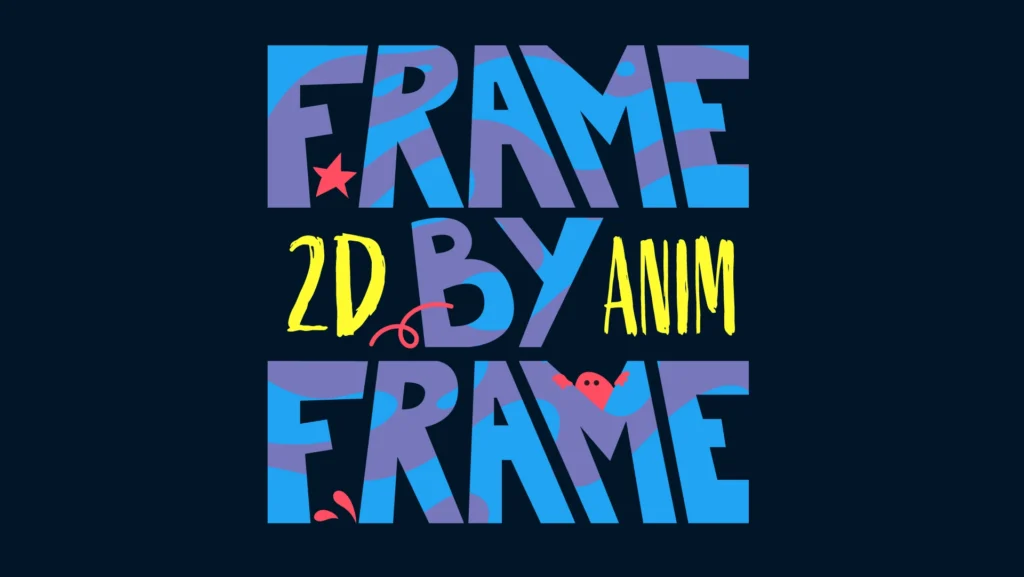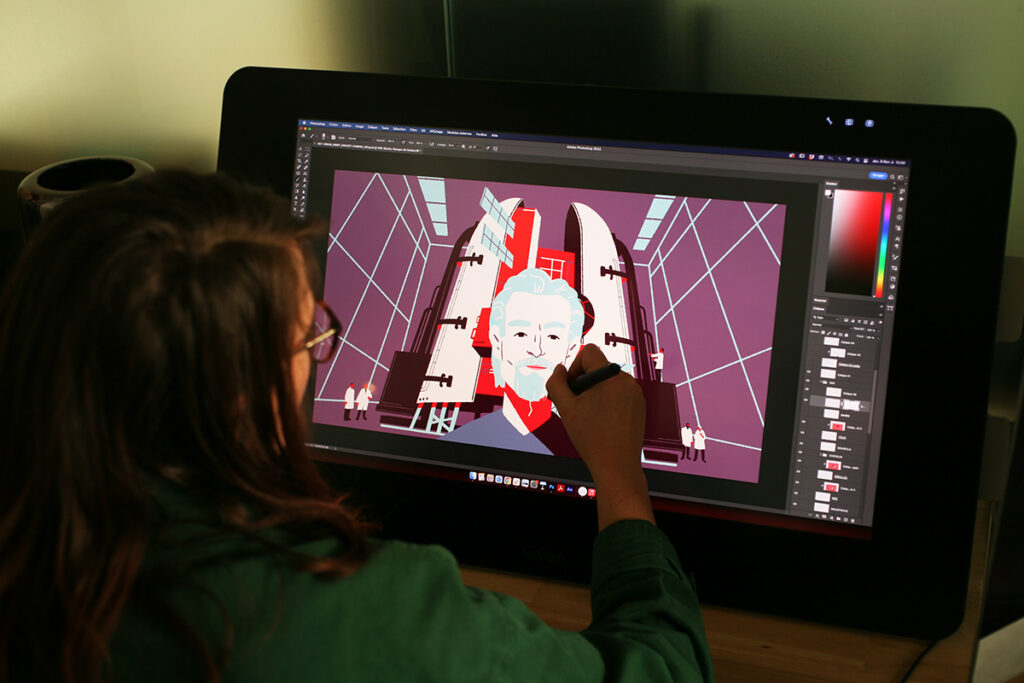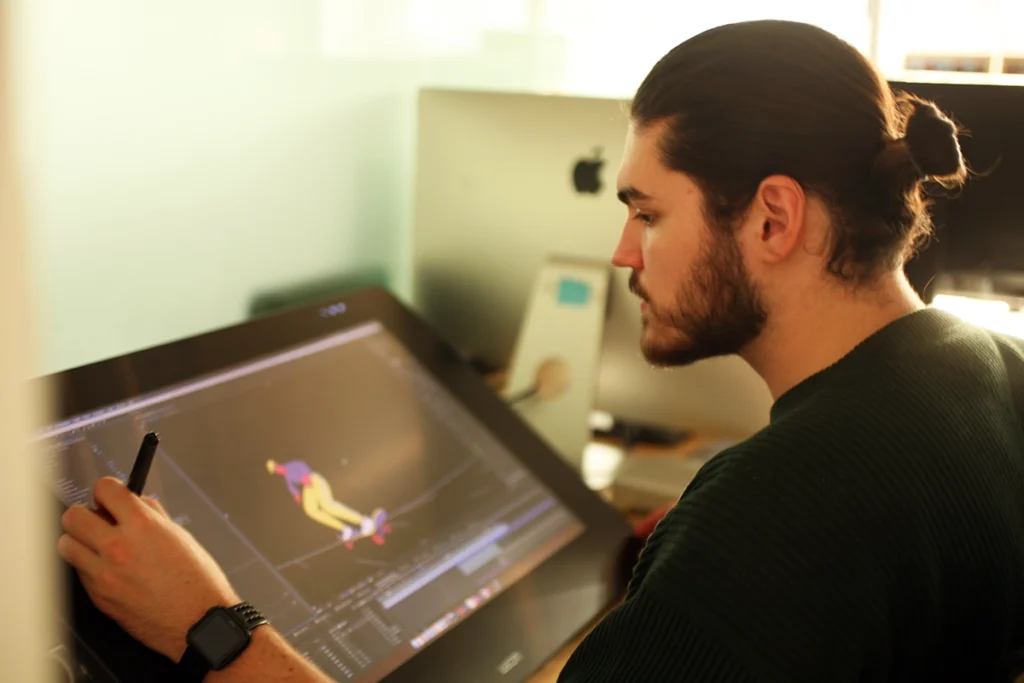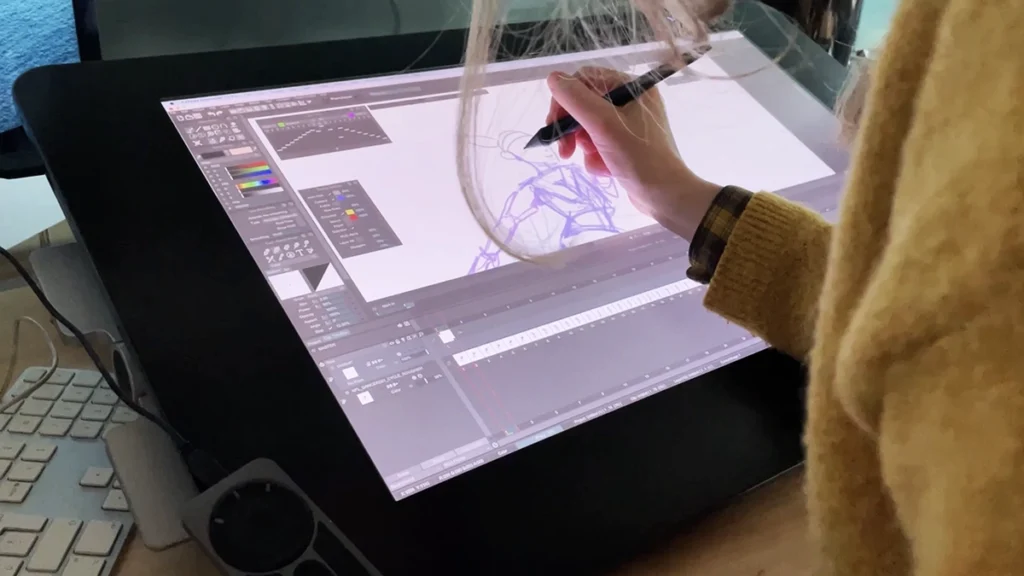What is Frame by Frame Animation?

Frame by frame animation is a traditional animation technique where each frame is drawn individually, either by hand or digitally, to create the illusion of movement. When played back in sequence at a certain speed (typically 12 or 24 frames per second), these individual images give the appearance of continuous motion.
It’s a labor-intensive process as each change in movement or expression requires a new drawing, but it allows for a great deal of fluidity and creativity in the resulting animation. Frame by frame animation is known by several terms, each reflecting a certain aspect of this technique:
-Traditional Animation: This term alludes to the classical method of animation, especially when it was done on paper before the advent of digital tools.
-Cel Animation: Historically, animations were drawn or painted on transparent sheets known as “cels” before being photographed frame by frame. This term is a nod to that process.
-Hand-drawn Animation: This emphasizes the manual aspect of the technique, where each frame is crafted by hand, as opposed to computer-generated methods.
-Rotoscope Animation: Rotoscope animation is a type of 2D animation where animators trace over live action footage frame-by-frame. This not only saves a significant amount of time when animating by-hand, but also results in a more realistic sense of movement in the finished product.

Unparalleled Artistic Freedom in Frame by Frame Animation
Perhaps the greatest advantage of frame by frame animation lies in its inherent ability to capture unique, organic movements and emotions that might be hard to achieve with other animation methods. Here are some of the benefits:
Each frame is meticulously crafted, allowing animators to infuse every moment with individual artistic expression, resulting in animations teeming with life and nuance. This level of detail provides animators with unparalleled artistic freedom, enabling them to bring forth even the subtlest of character expressions or the most fluid of movements.
Moreover, frame by frame animation isn’t restricted by predefined rigs or models. Where skeletal or rig-based animations might have mechanical constraints, frame by frame animation offers limitless potential. If it can be envisioned and drawn, it can be animated. This absence of constraints means that the animator’s imagination is the only limit.
However, the charm of this approach isn’t solely based on its technical merits. The inherent imperfections in hand-drawn animations give them a unique, organic feel that many viewers find endearing. There’s a warmth and soul to frame by frame animations, often stemming from the personal touch of the animator. This blend of artistic freedom, fluidity, and organic charm makes frame by frame animation a cherished art form, despite its labor-intensive nature.
Crafting Authenticity in Frame by Frame Animation
Producing quality frame by frame animation requires an understanding the physics and nuances of real-life motions. By observing and comprehending movements in the real world, your animations will appear more believable. As with any skill, practice is essential – beginning with basic animations and progressively transitioning to intricate projects will enhance your expertise.
Maintaining a consistent style throughout your animation is also crucial as it augments the viewer’s experience and imparts a cohesive feel to the animation. It’s crucial to remember that while frame by frame animation is labor-intensive, the end product can be immensely satisfying. By infusing your distinct touch into every frame, you can craft animations that are vibrant and brimming with personality.
Character Design in Frame-by-Frame Animation
Integrating character design into frame-by-frame animation is a meticulous yet rewarding process that brings characters to life through a sequence of individual drawings. To begin, it’s crucial to have a well-defined character concept that aligns with the narrative or purpose of your animation. This concept should encompass the character’s personality, role, and distinctive features.
The animation process starts with sketching the character in various key poses and expressions. These sketches serve as the foundation for your frame-by-frame animation. Attention to detail is paramount as each frame contributes to the character’s movement and overall portrayal.
Animating frame by frame involves crafting a series of drawings that depict the character’s motion fluently. Careful consideration of timing, spacing, and the character’s physical attributes ensures that the animation feels natural and convincing. The character’s expressions and body language should align with their emotions and actions in the storyline.
As you progress through the animation, be sure to refine the character’s movements and fine-tune their expressions to maintain consistency and coherence. Character design plays a pivotal role in this process as it influences how the character conveys emotions and engages with the audience. Ultimately, successful frame-by-frame animation with well-designed characters requires patience, attention to detail, and a deep understanding of the character’s role in the narrative. The effort is worth it, though, as it results in a compelling and visually engaging animation.
Criteria for Mastery in Frame Animation: From Fluidity to Emotion
Evaluating the quality of a frame animation video is a subjective endeavor, heavily influenced by the animation’s purpose, target audience, and individual preferences. One of the primary indicators of quality is the fluidity of movement. Smooth, natural motion suggests careful craftsmanship and attention to detail, while inconsistencies in character design, proportions, or backgrounds can disrupt the viewing experience. Equally critical is the timing and pacing, as it establishes the rhythm of the animation, effectively conveying emotions and story beats. In the realm of frame-by-frame animation, which boasts immense artistic freedom, the expressiveness of characters plays a pivotal role in connecting with the viewer.
Beyond the mechanics of movement and pacing, the overarching artistic style and aesthetic impart a tone and atmosphere that set the animation apart. This visual appeal, combined with elements like color palette, line quality, and special effects such as shadowing and lighting, contributes to the animation’s memorability.
Even so, irrespective of visual brilliance, the essence of any animation lies in its storytelling. A compelling narrative, when intertwined with visual elements, captures the viewer’s heart and mind. Furthermore, the integration of sound, from voice acting to background scores and effects, can enhance or diminish the overall experience based on its synchronization and quality.
Lastly, while technical execution and storytelling are foundational, originality holds its own merit. Fresh concepts, innovative techniques, or unique perspectives can elevate an animation from good to exceptional. Yet, the ultimate litmus test is the reception by the intended audience. Whether an animation resonates emotionally, educates effectively, or achieves its set goal determines its success in the eyes of its viewers.
Digital Tablets Revolution: The Wacom Cintiq 27 Experience

Digital tablets, especially high-end models like the Wacom Cintiq 27, have transformed the landscape of digital art and animation. The Cintiq series offers a direct drawing experience with its built-in display, allowing artists to draw directly on a screen that closely mimics the feel of drawing on paper. Coupled with this is the device’s pressure sensitivity, which detects varying levels of pressure applied by the stylus. This dynamic detection enables natural line variations, similar to traditional drawing instruments. Moreover, some styluses come with tilt recognition, further enhancing the drawing experience by recognizing the angle at which they are held, which is great for natural shading techniques.

These tablets don’t just stop at providing an intuitive drawing experience. They are equipped with features designed to enhance workflow efficiency. Customizable ExpressKeys allow artists to program shortcuts for frequent actions, and multi-touch capability enables easy navigation with touch gestures to zoom, rotate, and move across the canvas. Premium models, like the Cintiq 27, boast high-definition displays that provide accurate color representation—a critical feature for professionals aiming for precise color work. Furthermore, the ergonomics of these devices have been taken into consideration, with adjustable stands and thoughtfully designed styluses to reduce strain during prolonged use.

Beyond the hardware, one of the significant advantages of digital tablets is their software compatibility. They work seamlessly with a plethora of professional software, from graphic design to animation. This compatibility streamlines the artistic process, allowing for easy corrections, layer manipulations, and a wide range of tools accessible at the click of a button. The digital nature of these tablets also promotes an environmentally friendly approach, reducing the dependency on physical materials and paper. For many modern artists, illustrators, and animators, devices like the Cintiq 27 have become indispensable tools, bridging the gap between traditional artistry and the digital age.